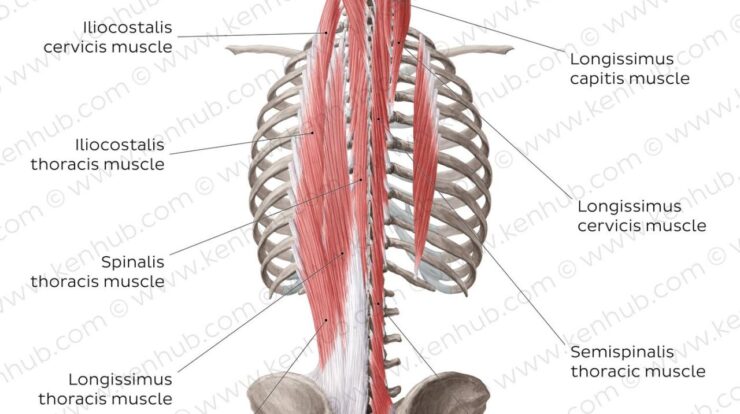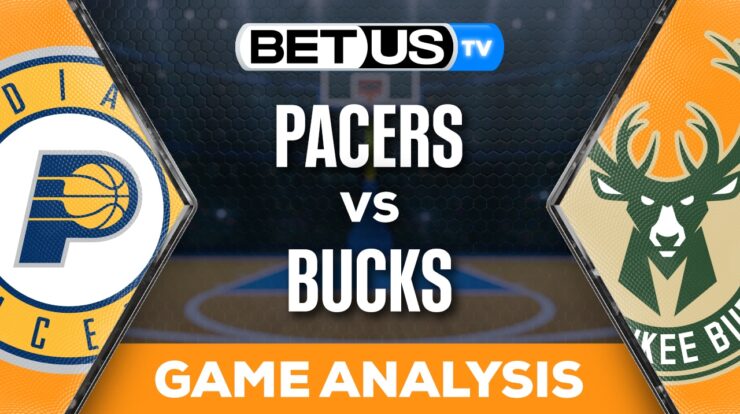
How to live as a villain ch 94 transports readers into a captivating world of villainy, where motivations are sinister, schemes are cunning, and confrontations are epic. This chapter delves into the psyche of the villain, exploring the complexities of their desires, the strategies they employ, and the relationships they forge.
As the narrative unfolds, readers witness the villain’s transformation from ordinary to extraordinary, driven by a thirst for power, revenge, or simply the pursuit of chaos. The chapter delves into the dynamics of hero-villain confrontations, analyzing the strengths and weaknesses of both sides and the thrilling outcomes that ensue.
Villainous Motivations: How To Live As A Villain Ch 94
The actions of villains are often driven by a complex web of motivations and desires. These motivations can range from a thirst for power to a desire for revenge, and they shape the villain’s personality and decision-making in profound ways.
In Chapter 94 of “How to Live as a Villain,” the protagonist encounters an unexpected ally in the enigmatic Clark Mecconline, an expert in the field of computer science . With his vast knowledge and technical prowess, Mecconline provides the protagonist with invaluable assistance, helping them navigate the treacherous path of villainy.
As the chapter progresses, the protagonist’s understanding of their own villainous nature deepens, and they begin to embrace the challenges that lie ahead.
One of the most common motivations for villains is a desire for power. Villains who are driven by power seek to control others and impose their will on the world. They may believe that they are superior to others and that they have the right to rule.
Alternatively, they may simply enjoy the feeling of power and control.
Revenge
Another common motivation for villains is a desire for revenge. Villains who are driven by revenge have been wronged in some way, and they seek to make those who wronged them suffer. They may believe that they are justified in their actions, and they may even see themselves as heroes.
Evil Schemes and Strategies

The villain’s nefarious schemes involve a series of carefully orchestrated plans and strategies designed to achieve their malevolent goals. These schemes are characterized by their cunning, ruthlessness, and often grandiose scope.
The latest chapter of the popular web novel “How to Live as a Villain” has been released, revealing more of the protagonist’s cunning schemes. Meanwhile, in the realm of dental health, a new article explores alternative methods for treating gum disease without the need for a dentist.
While the protagonist of “How to Live as a Villain” navigates treacherous political landscapes, those seeking relief from gum disease can find solace in this comprehensive guide: how to cure gum disease without a dentist . As the story of “How to Live as a Villain” unfolds, readers can also explore innovative approaches to maintaining oral health.
One of the key strategies employed by the villain is the use of deception and manipulation. They skillfully craft elaborate lies and half-truths to deceive their opponents and gain their trust. By playing on the weaknesses and vulnerabilities of others, the villain can manipulate them into doing their bidding or providing valuable information.
Exploitation of Weaknesses
The villain has a keen eye for identifying and exploiting the weaknesses of their adversaries. They study their targets meticulously, analyzing their strengths and vulnerabilities to devise strategies that will undermine their defenses. By targeting these weaknesses, the villain can gain a significant advantage and increase their chances of success.
Even in the realm of villainy, oral hygiene remains crucial. For those seeking to maintain their nefarious grin, consider exploring how to cure gum disease without a dentist . While vanquishing heroes may be your primary objective, a healthy smile can enhance your sinister charisma.
Return to the thrilling exploits of “How to Live as a Villain” Ch. 94, where the nefarious protagonist faces new challenges with their newfound dental prowess.
For example, if the villain knows that their opponent is particularly susceptible to flattery, they may use compliments and praise to gain their favor. Alternatively, if they discover that their opponent has a fear of heights, they may arrange a meeting at a high-rise building to unsettle them.
Orchestrated Chaos
The villain often employs orchestrated chaos as a means of achieving their goals. By creating confusion and disarray, they can overwhelm their opponents and disrupt their plans. This chaos can take various forms, such as sabotage, false rumors, or even physical attacks.
For instance, the villain may sabotage a key piece of equipment at a rival company, causing production delays and financial losses. They may spread false rumors about a prominent figure to damage their reputation and create distrust. Or, they may launch a coordinated attack on multiple targets to overwhelm security forces and create widespread panic.
In the gripping world of “How to Live as a Villain” Ch. 94, the protagonist’s cunning strategies and ruthless determination continue to unfold. However, amidst the villainous exploits, the chapter also highlights the importance of self-care. For readers seeking guidance on maintaining optimal oral health, the chapter seamlessly integrates a valuable resource: how to cure gum disease without a dentist . This comprehensive guide provides expert advice on combating gum disease, empowering readers to maintain a healthy smile while pursuing their villainous aspirations.
Strength in Numbers
The villain understands the power of numbers and often seeks to build alliances and recruit followers to their cause. By amassing a loyal following, they can increase their influence and resources. These followers can provide manpower, financial support, or even access to restricted information.
For example, the villain may form a criminal organization to carry out their schemes. They may recruit skilled hackers to infiltrate secure systems, or they may hire mercenaries to provide protection and muscle. By building a network of loyal supporters, the villain can increase their chances of success and consolidate their power.
Villainous Allies and Partnerships
In the world of villainy, alliances and partnerships play a crucial role in shaping the narrative and driving the villain’s actions. These relationships can range from fleeting alliances of convenience to deep-rooted partnerships built on shared goals and motivations.
Types of Villainous Partnerships
- Coalitions of Evil:Alliances formed between multiple villains, often with divergent goals, to achieve a common objective. These coalitions can be highly unstable, with betrayal and infighting a constant threat.
- Mastermind and Henchmen:A classic villainous partnership where a brilliant mastermind orchestrates schemes, while loyal henchmen carry out their orders. The henchmen may provide specialized skills or brute force, while the mastermind supplies the intellect and strategic vision.
- Criminal Organizations:Large-scale criminal enterprises, such as cartels or gangs, that operate under a hierarchical structure. Members of these organizations may have varying levels of autonomy and loyalty, but they are ultimately united by their shared criminal objectives.
Impact on the Villain’s Actions
The nature of a villain’s partnership can significantly influence their actions and decision-making. Alliances with other villains can provide access to resources, skills, and support, enabling them to pursue more ambitious schemes. Conversely, treacherous allies can betray and undermine their plans, forcing them to adapt or seek new partnerships.
Influence on the Narrative
Villainous partnerships also play a vital role in shaping the overall narrative of a story. They can create tension and conflict, as alliances shift and betrayals occur. These relationships can also add depth and complexity to the villain’s character, revealing their motivations, vulnerabilities, and potential for redemption.
Hero-Villain Confrontations
Hero-villain confrontations are pivotal moments in any villainous narrative, as they showcase the clash of ideologies, powers, and strategies. The dynamics of these confrontations are often complex, with each side possessing unique strengths and weaknesses that influence the outcome of the battle.
In the ongoing saga of “How to Live as a Villain” Chapter 94, the protagonist grapples with moral dilemmas. Amidst the chaos, they seek solace in finding alternative remedies for common ailments. One such ailment, gum disease, can be effectively treated without the need for a dentist.
By utilizing natural ingredients and home remedies, individuals can alleviate gum inflammation and restore oral health. Refer to the comprehensive guide how to cure gum disease without a dentist for detailed instructions and proven techniques. With these newfound remedies, the protagonist in “How to Live as a Villain” can not only navigate the treacherous path of villainy but also maintain their oral hygiene, ensuring a balance between evil and self-care.
Strengths and Weaknesses of Heroes, How to live as a villain ch 94
Heroes typically possess noble intentions, unwavering determination, and a strong sense of justice. They often have access to advanced technology, powerful allies, and the support of the public. However, their adherence to moral codes can sometimes limit their effectiveness in combat, and their emotional attachments can make them vulnerable to manipulation.
Strengths and Weaknesses of Villains
Villains, on the other hand, are driven by ambition, greed, or a desire for chaos. They often possess extraordinary powers, cunning intellect, and a ruthless disregard for morality. However, their motivations can sometimes lead them to underestimate their opponents or make reckless decisions.
Additionally, their isolation and lack of public support can hinder their ability to gather resources and execute their plans.
Influence of the Confrontations
The outcome of hero-villain confrontations can have a profound impact on both the narrative and the characters involved. A villain’s victory can demoralize the heroes and embolden their followers, while a hero’s triumph can restore hope and inspire resistance. The confrontations can also serve as a catalyst for personal growth or redemption, as both heroes and villains are forced to confront their own values and motivations.
Villainous Transformation
Villains are not born, they are made. The journey from ordinary individuals to formidable adversaries is often a complex and multifaceted one, shaped by a myriad of factors. This transformation can be traced through key events and experiences that gradually corrupt and harden their hearts, ultimately leading them down a path of darkness.
One common catalyst for villainous transformation is a profound sense of injustice or betrayal. When individuals feel wronged or mistreated by society or those they trusted, they may develop a deep-seated resentment and desire for revenge. This can lead them to embrace villainous means as a way of lashing out against the world and seeking retribution.
Key Events and Experiences
The path to villainy is often marked by a series of pivotal events and experiences that serve as turning points in the villain’s development. These events can range from traumatic childhood experiences to personal setbacks and failures. For example, a villain may have been subjected to abuse or neglect as a child, leading them to develop a distorted view of the world and a deep-seated mistrust of others.
Alternatively, a villain may have suffered a major personal setback or failure, such as losing a loved one or being passed over for a promotion. This can trigger a sense of bitterness and resentment that gradually consumes them and drives them towards villainous actions.
In some cases, a villain’s transformation may be more gradual and subtle. They may start out with good intentions but gradually become corrupted by power or the pursuit of their own selfish desires. As they become more accustomed to using villainous tactics, they may lose their sense of empathy and compassion, becoming increasingly ruthless and heartless.
Concluding Remarks
How to live as a villain ch 94 concludes with a thought-provoking exploration of the villain’s journey, tracing their evolution from humble beginnings to the formidable adversaries they become. Through a captivating blend of storytelling and analysis, this chapter provides a comprehensive understanding of the villain’s psyche and the intricate tapestry of their actions.
Question & Answer Hub
What are the key motivations that drive villains?
Villains are often motivated by a desire for power, revenge, or simply the pursuit of chaos. Their motivations shape their actions and decisions, making them formidable adversaries.
How do villains develop their schemes?
Villains carefully craft their schemes, considering the strengths and weaknesses of their opponents. They employ cunning strategies and alliances to achieve their nefarious goals.
What role do allies play in a villain’s life?
Villains often form alliances with other villains or individuals who share their goals. These partnerships can provide support, resources, and a shared sense of purpose.
How do heroes and villains interact?
Hero-villain confrontations are intense and often pivotal moments in the narrative. Each side brings their unique strengths and weaknesses to the battle, leading to thrilling outcomes.
What is the significance of a villain’s transformation?
Villains undergo significant transformations throughout their journey. These transformations are shaped by key events and experiences, ultimately leading to their evolution into formidable adversaries.





